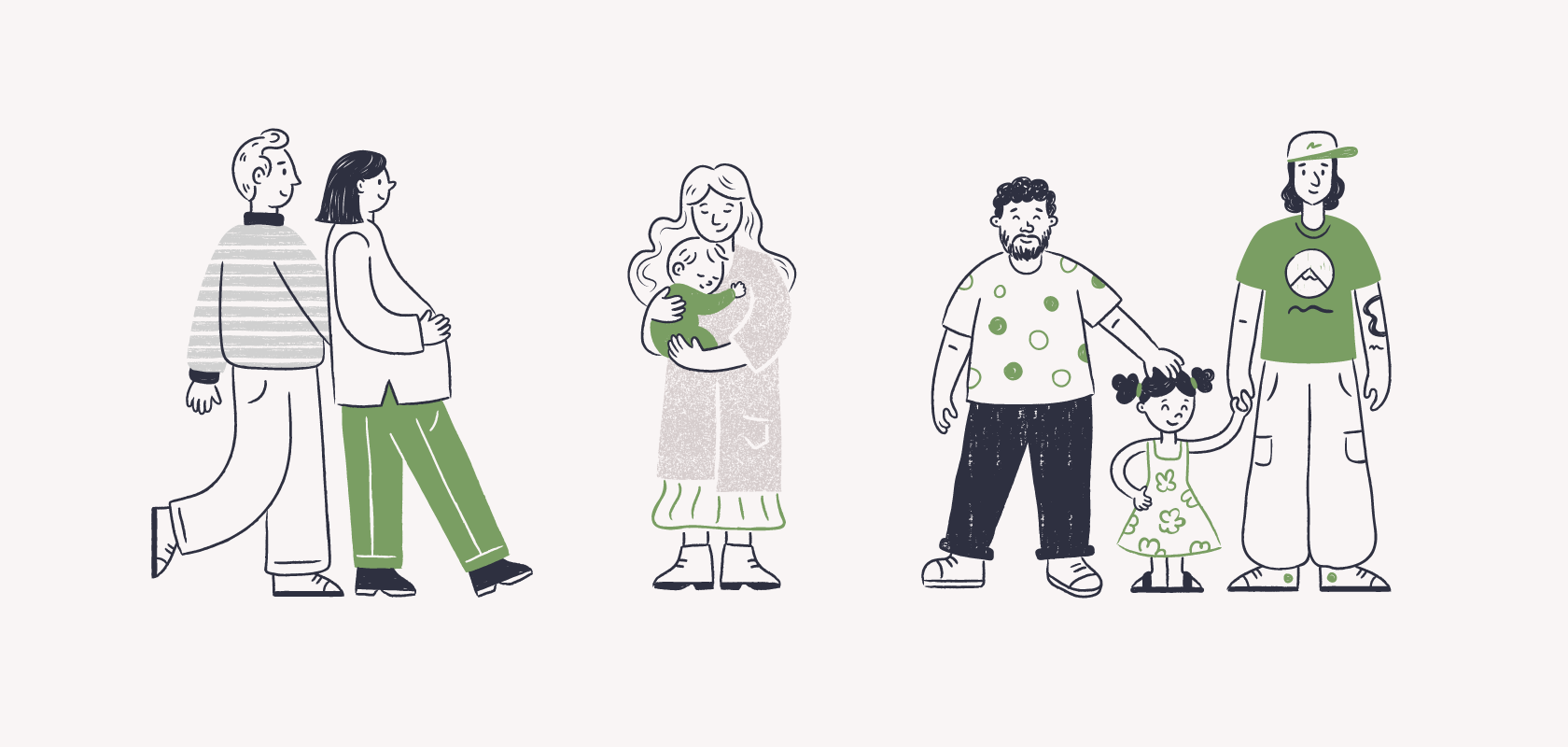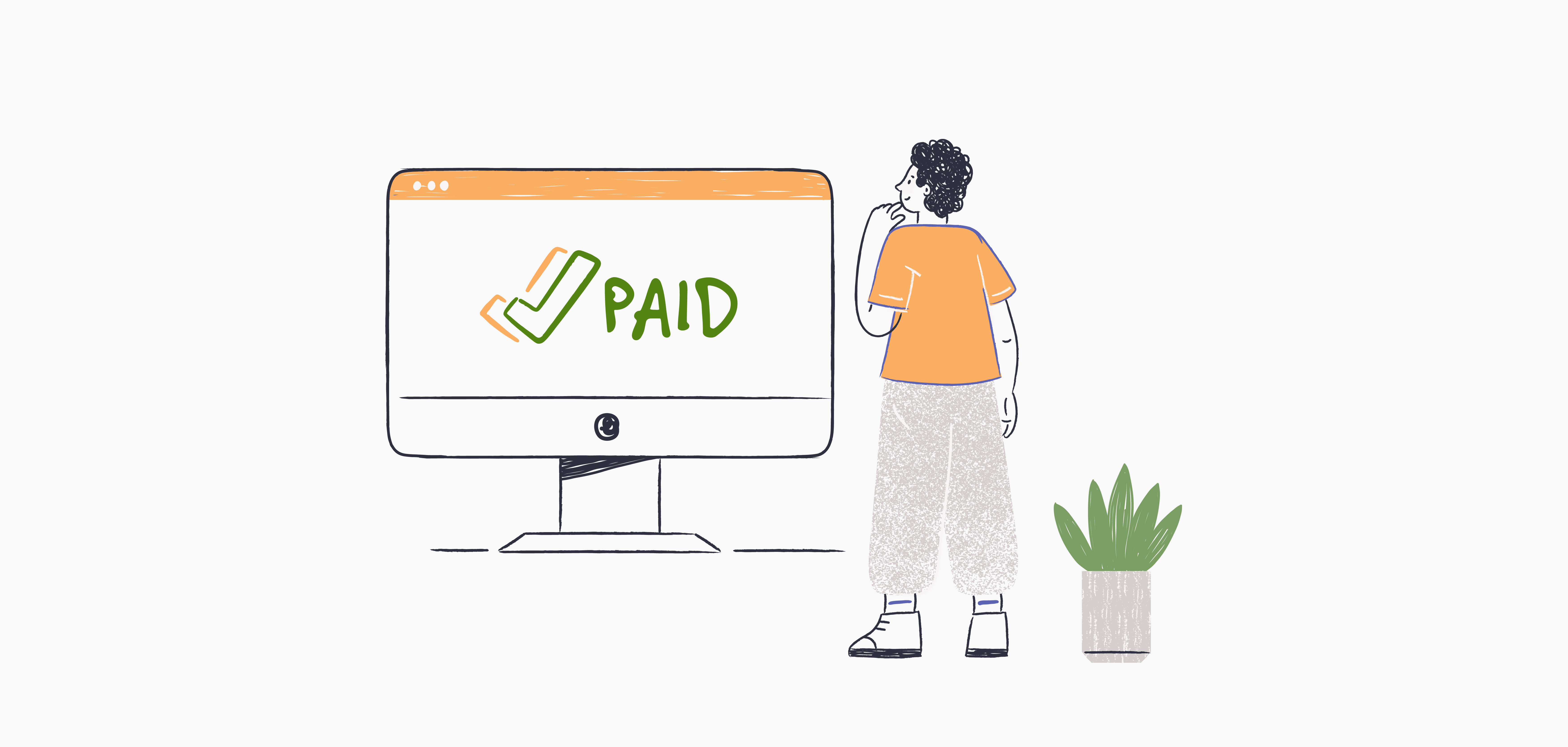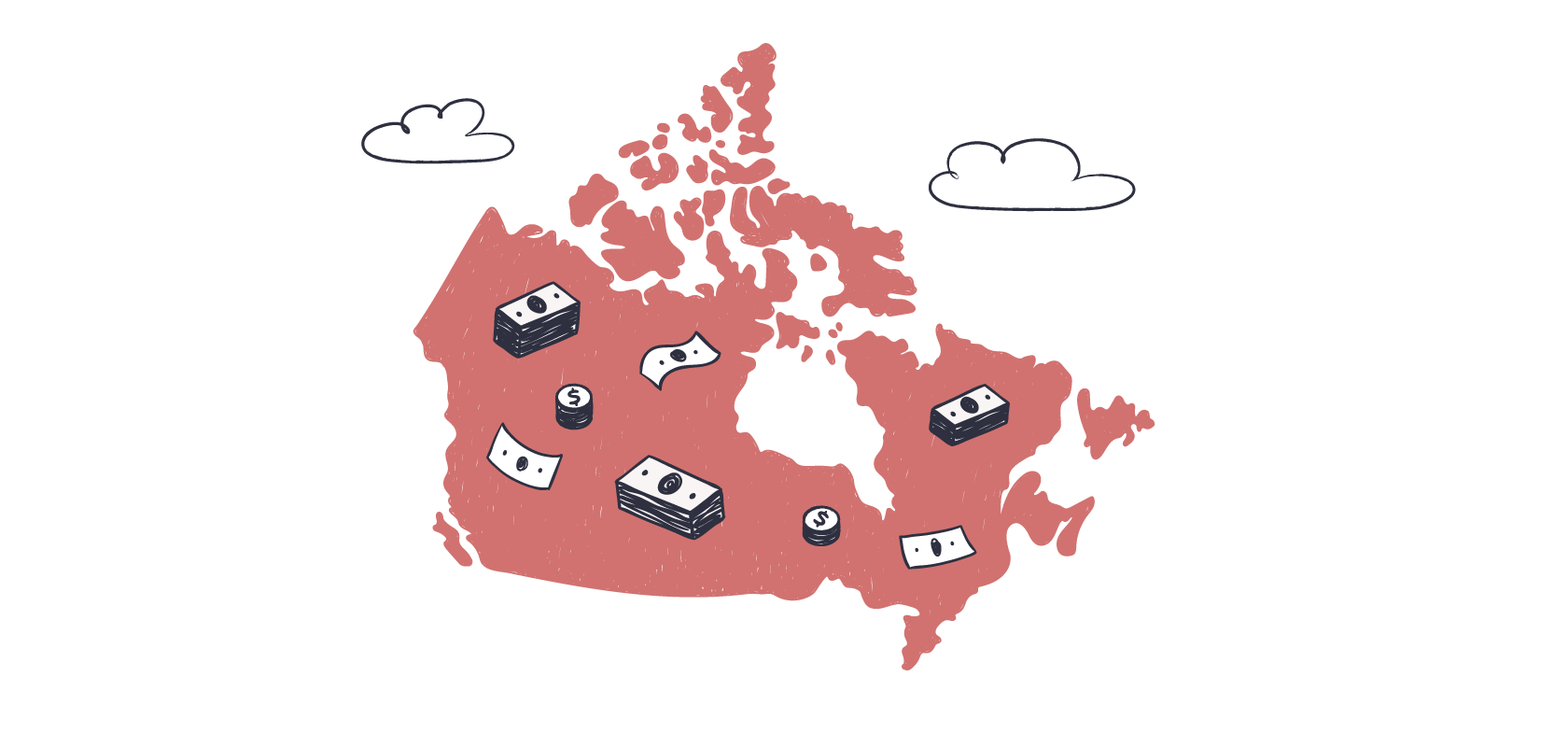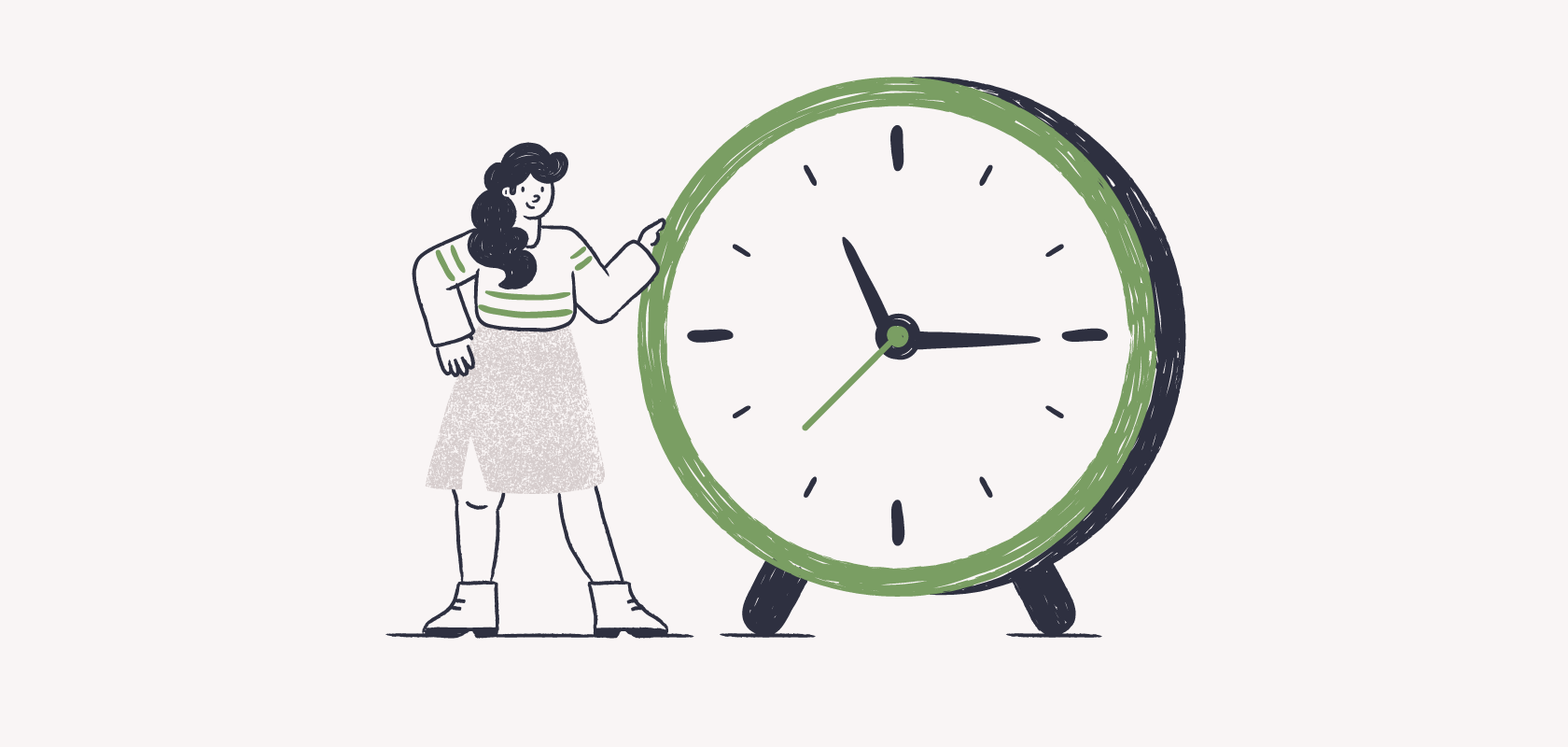Become an insider!
Get our latest payroll and small business articles sent straight to your inbox.
If you hire employees, there’s a good chance that one or more of them might become a parent while they’re working for you. It’s important to understand the ins and outs of how maternity and parental leave will affect your small business so you’re not scrambling to figure everything out at the last minute.
In this guide, we’ll walk you through what you need to know when it comes to your obligations as an employer, how Employment Insurance (EI) benefits fit into these leave types and how you can offer a little extra support to your employees during this life-changing time.
Understanding maternity and parental leave benefits in Canada.
Whether you’re about to hire your first employee or you just need a quick refresher on maternity and parental leave requirements, the basics are the best place to start.
Employment Insurance (EI)
As part of Canada’s federal EI program and the provincial Québec Parental Insurance Plan, workers are entitled to temporary financial assistance from the government when they become parents. This includes new biological and adoptive parents.
Maternity benefits
Your employees can claim this benefit if they’re away from work because they’re pregnant or have recently given birth.
Parents can’t share maternity benefits in Canada, but a person receiving the maternity benefit might also be entitled to parental benefits.
Parental benefits
These benefits are available to parents of either a newborn or a newly adopted child, and parents can opt to get either a standard or extended benefit paid to them.
Federal regulations in Canada regarding maternity or parental leave.
All employees are entitled to basic parental leave in Canada. However, they won’t necessarily get paid for this time off unless they apply for EI benefits and meet certain criteria, or unless you choose to keep paying your employees while they’re taking leave.
The government will pay your employees a certain amount for parental and maternity benefits based on how long they’ve worked for you and their previous work history.
How EI fits into maternity and parental leave
EI will help support your employees while they’re away from work and adjusting to life with their new child. You can find the provincial EI qualification and leave details for the current year here.
Your employees might be eligible to apply for EI maternity or parental benefits that could cover up to 55% of their earnings while they’re on leave, up to a maximum of $650 a week if:
- They have paid EI premiums
- They meet specific criteria for receiving these benefits
- They have insurable earnings
- Their weekly earnings will be reduced by over 40%
The EI amount doesn’t change if an employee has multiple births (e.g. twins or triplets) or adopts more than one child at the same time.
Maternity benefit amounts
The Federal Government reviews Canada’s maternity benefit rules and payment amounts each year. You can find the current amounts here.
Once maternity benefits are used up, parents can also apply for parental benefits to maximize the leave. Employees can apply for both at once if they choose to.
Standard vs. extended parental benefits
New parents have two options to choose from when they’re applying for parental benefits — standard or extended.
Whichever they choose impacts the weekly benefit amount as well as the number of weeks they’ll get paid for. Also, once they’ve selected an option, it can’t be changed.
If parents are sharing leave, both parents have to choose the same benefit option and submit their own, separate applications. They can also choose whether to receive both benefits at the same time or stagger the payments.
Standard benefits
The standard parental benefit gives parents the option to receive a higher percentage of their weekly earnings, but for less time than extended benefits.
Extended benefits
When it comes to extended benefits, parents can receive the benefits over a longer period of time, but they’ll get a lower percentage of their weekly earnings during this time.
How to manage maternity and parental leave as a small business.
Depending on your business size and structure, you might need to budget for overtime pay or temporary staff. You’ll also want to plan for any changes in revenue or workload that might happen as a result of an employee (or multiple employees) taking time off when they become parents.
Having a clear, mapped out plan can mean the difference between keeping calm and flying into a state of panic when an employee shares their big news. Once you’ve created your guidelines around maternity and parental leave, clearly communicating them to your employees will make sure everyone knows the game plan if the time comes.
Don’t forget the ROE!
Make sure you create and submit the Records of Employment (ROE) so your employees can apply for their maternity or parental EI benefits.
It’s up to you to file the ROE with Service Canada, not your employee’s. If you’re manually doing an ROE for your employee, it must be filed in triplicate — a copy for Service Canada, a copy for the employee and a copy for yourself to keep for your business records.
Alternatively, you can issue an electronic ROE. You can learn more about the deadlines for issuing and filing both types of ROEs here.
Service Canada will use the ROE information to determine whether an employee is eligible to receive any EI benefits, what their benefit amount will be and how long they will receive benefits for.
Federal legislation
Maternity benefits are paid by the government for a maximum of 15 weeks, and parental benefits are paid by the government up to a maximum amount. Any payments over and above the amounts paid by the government are totally optional for you as a business owner.
Parental pay top-ups and bonuses can be seen as an attractive benefit for prospective employees and put smiles on the faces of your current employees if you include them as part of their employment package.
Benefits during parental leave
Offering extra maternity and parental leave benefits positions your business as a caring, supportive place to work.
You might also choose to offer extra employment benefits outside of what the government offers as part of your employee perks or benefits package.
This could take the form of things like top-ups, extended leave time or a “baby bonus.”
For example, you might choose to offer a dollar amount equivalent to four weeks of salary for each employee on parental leave who has worked with you for at least a year.
Or you might choose to continue their eligibility for bonuses, health and dental plans or other incentive programs while they’re on leave.
It’s worth noting that any top-ups to an employee’s EI benefits while they are on parental leave will be recorded as income on payroll, so this will impact the total amount of money they receive from the government.
Will you require written notice?
While it’s not legally required, it can be handy to ask your employees to give you advance notice of their leave. This will help you plan for the time they’re away from work and get all their paperwork in order in a timely fashion.
For example, you might need to hire a new employee to cover daily tasks when somebody is taking their maternity leave, and finding the right person to fill in could take a while.
In your employee handbook, have a clear plan laid out asking employees to give you reasonable written notice in advance of their maternity or parental leave start date (e.g. four weeks before they take leave) and the total amount of time they intend to take off.
Returning to work after parental leave
When you’re setting out the maternity and parental leave guidelines for your employees, make sure you don’t forget the part where they come back to work!
You’ll need to discuss with employees whether they intend to take their full parental or maternity leave entitlement, or whether they plan to come back to work early. Whatever they choose, request that they give you an approximate date for their return in writing.
You should also factor in a reasonable notice period (e.g. four weeks) if an employee decides they want to change the date they come back to work. This gives you adequate time to prepare for them returning to the workplace.
Your employees’ option to return to their job after taking leave isn’t up to you — it’s the law. Depending on the structure of your company, your employees might be able to return to their exact role — otherwise, you’ll need to guarantee their return to an alternate, equivalent role.
Whatever you decide, set these expectations and clearly communicate these guidelines to your employees so there aren’t any misunderstandings.
Flexible work arrangements
Many businesses now offer flexible working arrangements for employees taking maternity or parental leave, such as working remotely or coming back to work part time. This can help employees keep a good work-life balance as they juggle their employment and family responsibilities.
If you offer this, don’t forget to take into account how these new working hours and payments will factor into your payroll calculations.
In conclusion.
Supporting your employees while they’re on maternity and parental leave is important for their physical and emotional wellbeing as they navigate this new journey. But you also need to have a plan for their absence to ensure your business runs smoothly while they’re away.
By creating clear guidelines and communication around maternity and parental benefits, and understanding your obligations around payments and top-ups, you’ll be able to develop a positive workplace culture that celebrates parenthood and has a big impact on the lives of your employees.
Using payroll software like Wagepoint allows you to quickly and easily manage top-ups for maternity and parental pay whenever you need it — right from your computer.
If you’re looking for payroll software that ensures your maternity and parental leave calculations are accurate, sign up for Wagepoint to learn more about Wagepoint. We can help you fill in all the business, tax and employee information you need to get everything running smoothly.











